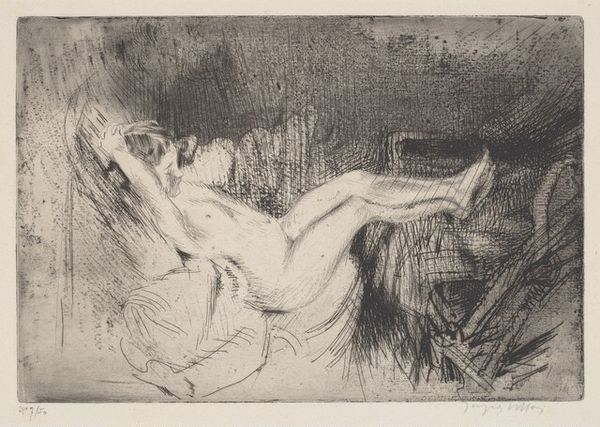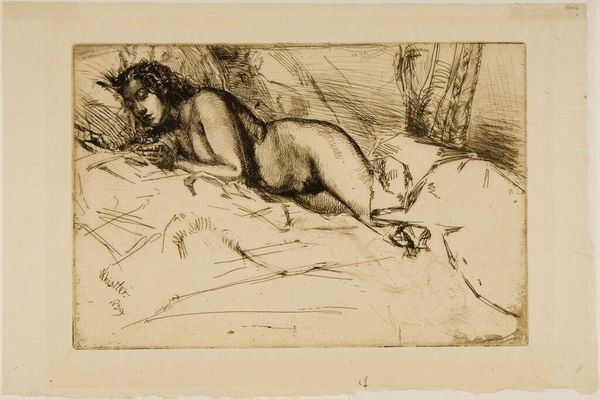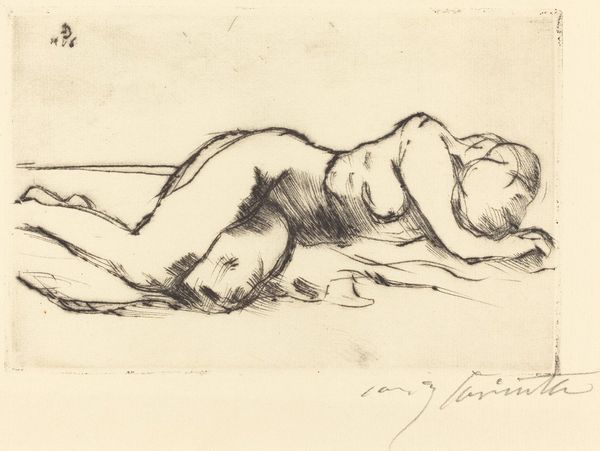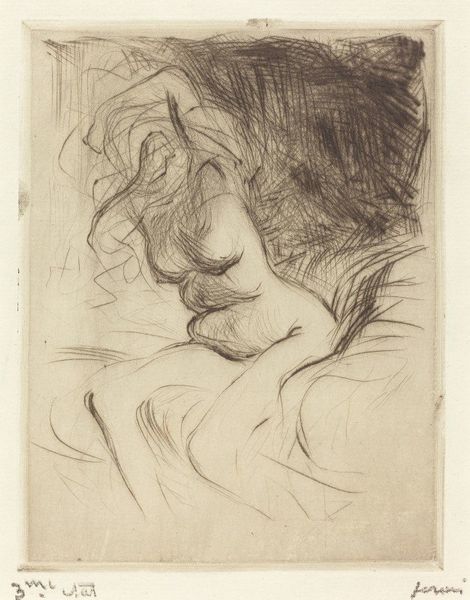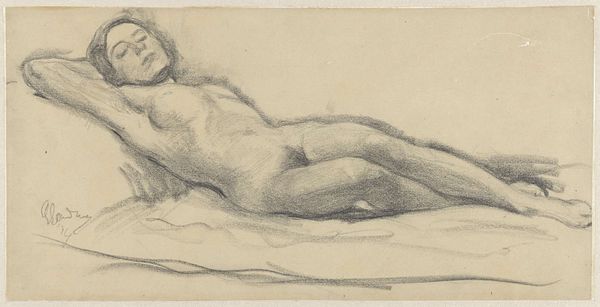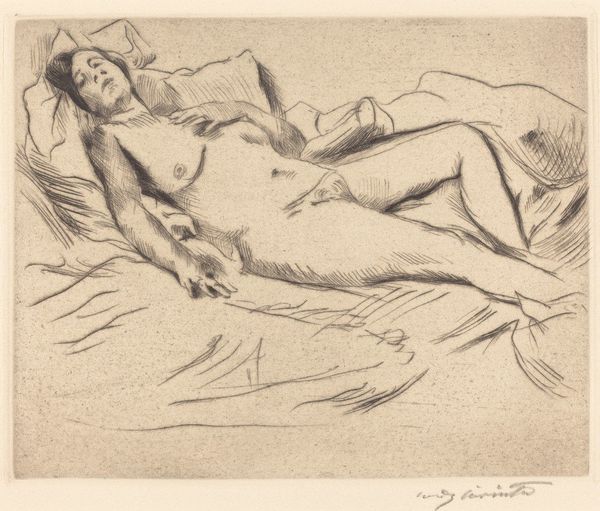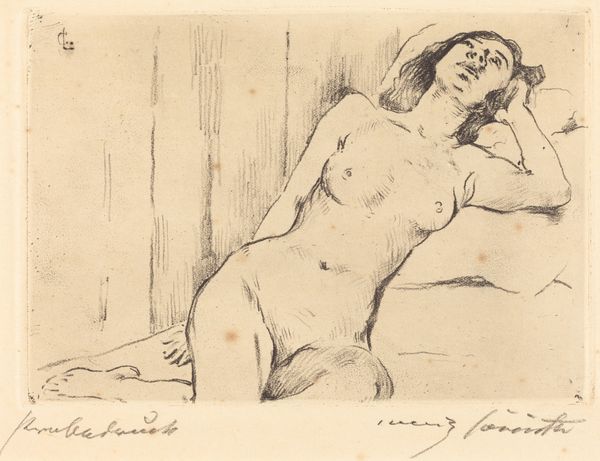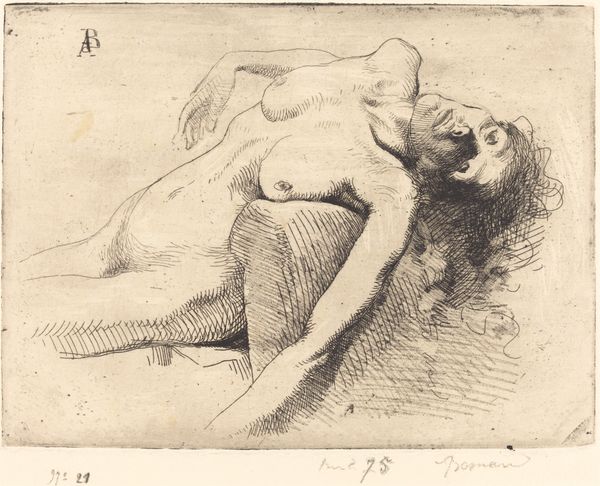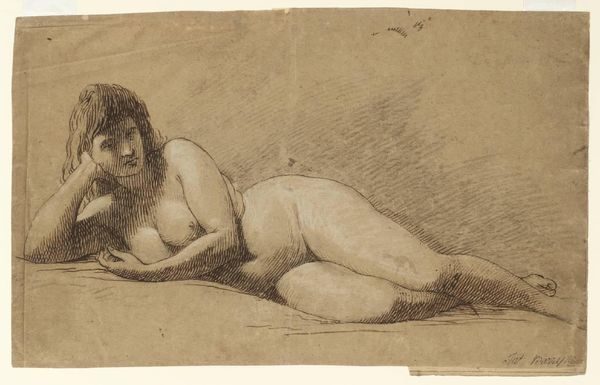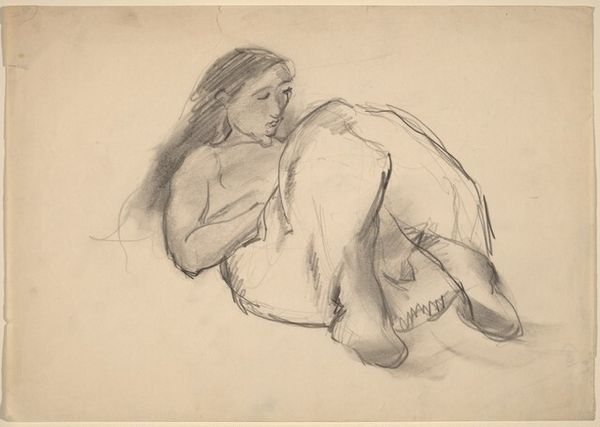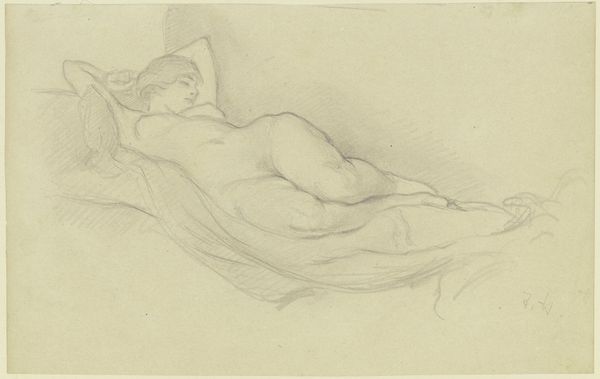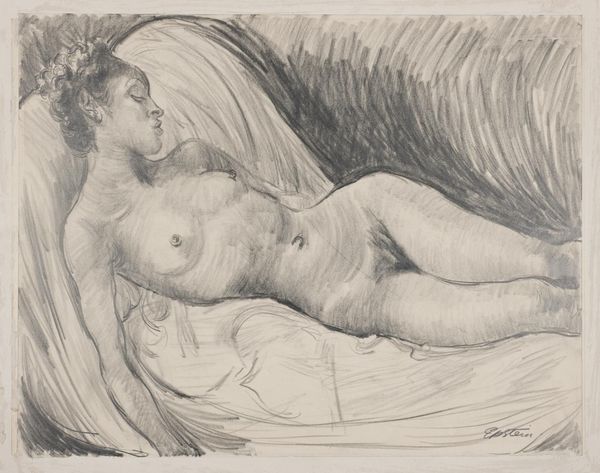
Dimensions: height 151 mm, width 227 mm
Copyright: Rijks Museum: Open Domain
Curator: Whistler’s etching, “Venus,” created in 1859, captures a reclining nude figure in a style that evokes both Romanticism and his early experimentation with portraiture. It is held in the collection of the Rijksmuseum. Editor: There’s a quiet intimacy to it, don’t you think? The etched lines feel incredibly delicate, like a fleeting observation caught on copper. The scale of the piece itself seems intentionally small, demanding a closer, more private viewing. Curator: Indeed. I find it fascinating to consider the context of the mid-19th century. The male gaze dominates representations of women. But with Whistler, one might ask about agency. Who is Venus? Who might she have represented? Is it a social commentary about Victorian ideals, even as the Romantics, and perhaps the sitter herself, would object to this association? Editor: Right, and think about the labor involved in etching, the physicality of scratching into the metal plate to create the image. It's a direct, almost confrontational act, contrasting with the softness of the subject matter. How does the use of copper as a medium influence the work's reception and longevity? Curator: Absolutely. And let’s not forget the accessibility of printmaking in Whistler’s time. Etchings could be reproduced and disseminated more easily than unique paintings, inviting broader, yet also distinctly classed, consumption. "Venus" challenges existing societal notions by questioning who has access to portrayals of the human form. Who is considered "high art?" And what labour is required to get the image into public awareness? Editor: It’s fascinating how Whistler combines traditional subject matter with an evolving technique. It encourages me to rethink these kinds of artistic conventions as social conventions in process and representation. It really puts a focus on labor that informs our experience, both for the creator and viewer, of the piece. Curator: For me, understanding the historical moment when Whistler dared to represent a nude woman while implicitly challenging societal conventions through art history reveals critical themes around identity, social agency, and artistic representation. Editor: And looking at the medium, considering the process of etching itself—how it allows for reproduction but also carries the marks of the artist's hand—adds another layer to this image, turning a delicate image into a potent, material statement.
Comments
No comments
Be the first to comment and join the conversation on the ultimate creative platform.
